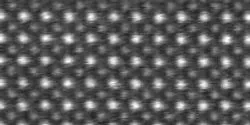Chemistry

Scientists’ underwater cameras got a boost this summer from the Electron Microscopy Center at the U.S. Department of Energy’s Argonne National Laboratory. Along with colleagues at the University of Manchester, researchers captured the world’s first real-time images and simultaneous chemical analysis of nanostructures while “underwater,” or in solution.

Caltech researchers have developed a novel way to visualize proteins generated by microorganisms in their natural environment—including the murky waters of Caltech's lily pond, as in this image created by Professor of Geobiology Victoria Orphan and her colleagues. The method could give scientists insights to how uncultured microbes (organisms that may not easily be grown in the lab) react and adapt to environmental stimuli over space and time.

In a new study that could ultimately lead to many new medicines, scientists from the Florida campus of The Scripps Research Institute (TSRI) have adapted a chemical approach to turn diseased cells into unique manufacturing sites for molecules that can treat a form of muscular dystrophy.

In July 1978, Peter Buseck of Arizona State University, together with two postdoctoral researchers (also then at ASU), published a paper on a new technique for high-resolution imaging of crystal structures using transmission electron microscopes. Recently, the scientific journal Nature has hailed that paper as a milestone in the science of crystallography. At the same time, Nature also cited three other milestone crystallography papers.

Kansas State University physicists and computer scientists are involved in a collaborative project to understand a long-lasting mystery: how light interacts with matter.

The findings open a doorway on an unexplored chemical galaxy containing vast numbers of new molecules for making drugs, plastics and unprecedented smart materials.

Scientists and students in the Research Triangle area of North Carolina will have new opportunities to attend presentations by leading analytical chemistry authorities, thanks to an endowment established by Thermo Fisher Scientific in the College of Sciences at North Carolina State University. The endowment will help support the planned Distinguished Analytical Chemistry Seminar Series in the Department of Chemistry.














